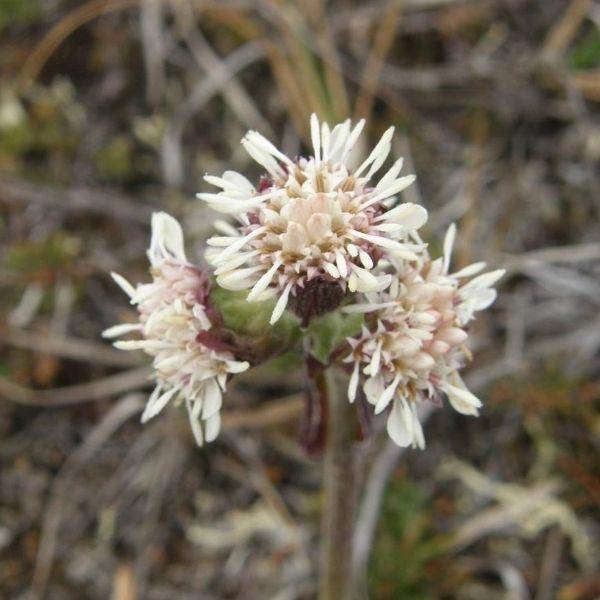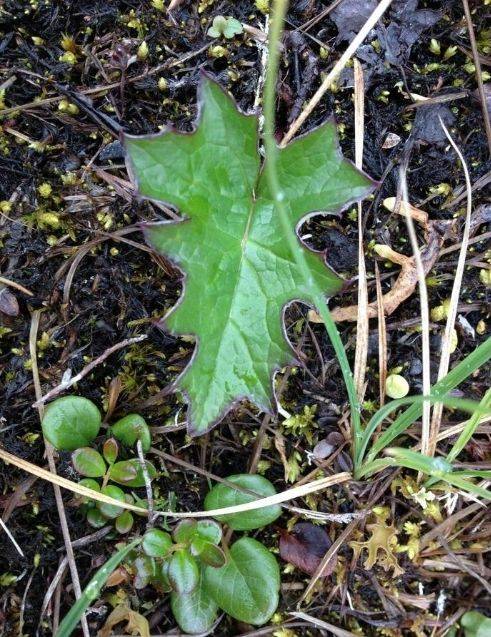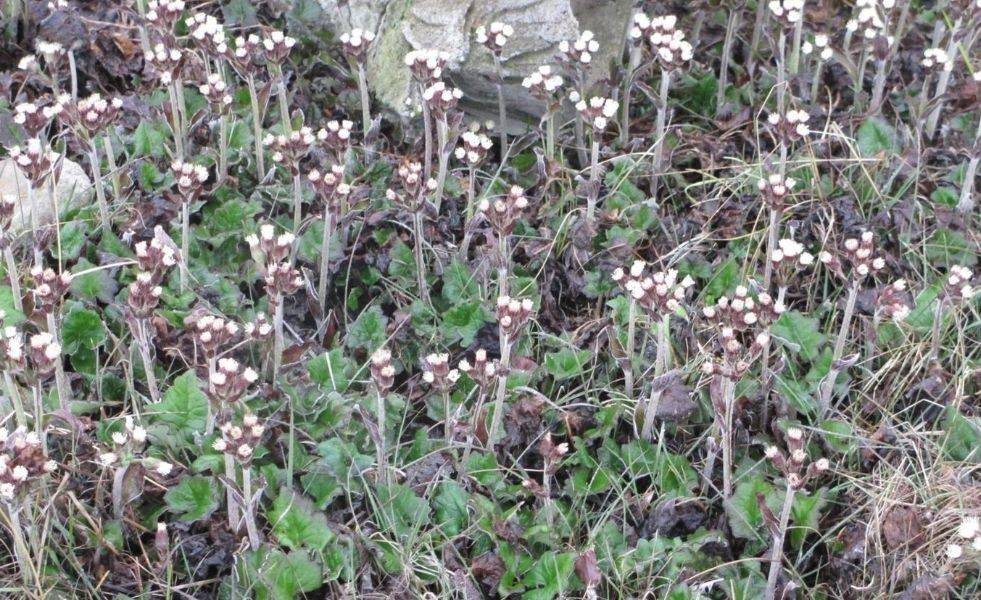Coltsfoot
Also called palmate coltsfoot or Arctic butterbur
- Iñupiaq name: Milukataq, Mapkutitaaġruaq or Milukutakpak
- Family: Asteraceae
- Scientific name: Petasites frigidus
- Distinguishing characteristics: Toothed, triangular leaves grow near the plant’s base. Leaves covered in soft white hairs. Heads containing many flowers are white with a purplish center. They are typically one of the first to bloom in spring.
- Similar species: Coltsfoot is a member of the aster family, like the Alaska dandelion. Like all asters, coltsfoot has densely clustered flowers growing in a head. Unlike the bright yellow flowers of the dandelion, coltsfoot produces white-pale yellow flowers with a striking purple center. Coltsfoot leaves are also different from that of the dandelion - coltsfoot produces heart shaped leaves, while dandelion produces long, slender leaves with many pointed teeth.
- Habitat: Moist tundra.
- Best time to harvest: Harvest flowers in early spring and leaves in late spring.
- Uses: Leaves can be eaten in salads, used on external sores or arthritis, and made into a tea to treat coughs.



Photos courtesy of the Grand Valley State University Arctic Ecology Program
